How to choose a rake |
||||||||||||||||||||||||||||||||||||||||||||||||||||||
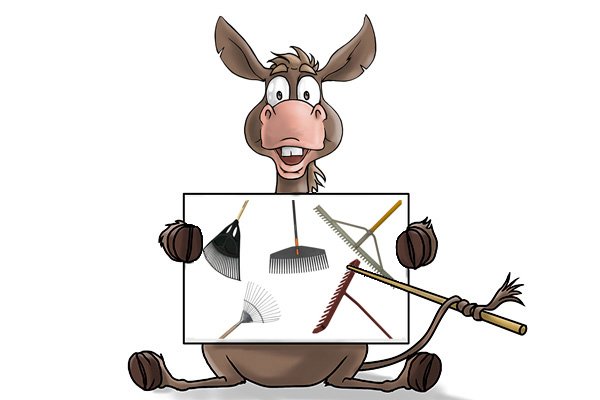 |
There are a few things that you should consider when choosing which rake will be most suitable for you to work with, as well as considering the jobs you’ll be using it for. You may need to have more than one rake in your garden tool collection. | |||||||||||||||||||||||||||||||||||||||||||||||||||||
General features to consider when choosing a rake |
||||||||||||||||||||||||||||||||||||||||||||||||||||||
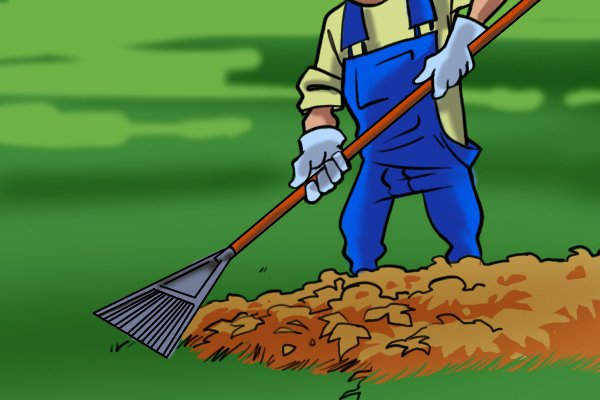 |
Not only are there a number of styles of rake for different tasks – there will also be a few variations between individual rakes of the same style. Personal preference and where you’re working will be important things to consider in making the right choice. | |||||||||||||||||||||||||||||||||||||||||||||||||||||
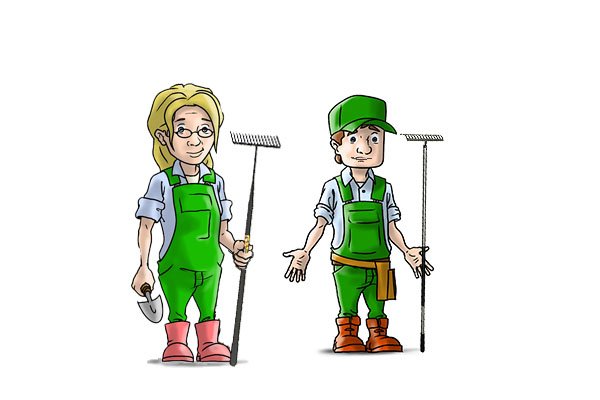 |
Handle lengthA rake you will use standing up should be a suitable length and weight for you to handle easily. A general indicator for a comfortable length of a rake is for it to reach the bridge of your nose from the floor. When you hold a rake you want some distance between your hands, but if it’s too great the balance of the rake will not feel right. |
|||||||||||||||||||||||||||||||||||||||||||||||||||||
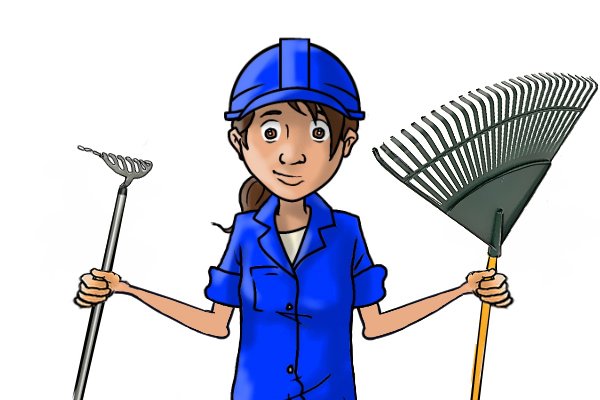 |
Head widthThe best width of head for a rake will depend on where you need to use it. Leaves covering big garden areas, or levelling ground covers on long driveways, will take less time if the rake has a wide head. However, larger heads will be heavier, so you could tire quicker. If working around shrubs or in other tight spaces you will need a rake with a smaller head, such as a hand rake. |
|||||||||||||||||||||||||||||||||||||||||||||||||||||
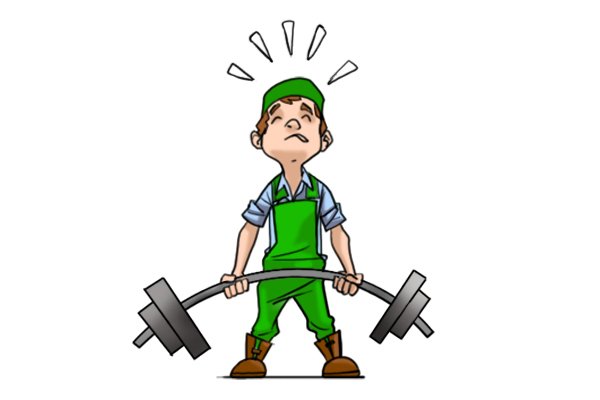 |
WeightThe rake should be heavy enough to enable you to perform your tasks, but light enough for you to be able to hold comfortably. Rakes intended for more heavy duty work will often be relatively heavy, because they need to be strong. Rakes designed to move light garden debris, like leaves or grass clippings, won’t need to be as strong so will be lighter. The lighter the rake, the easier it will be to use for longer periods. |
|||||||||||||||||||||||||||||||||||||||||||||||||||||
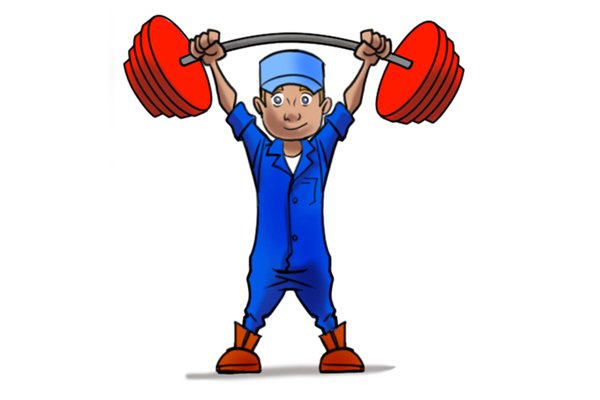 |
The materials a rake is made from will affect its overall weight. Steel parts mean that a rake may be fairly heavy. Aluminum and wood will be lighter but weaker than steel, with fiberglass being the lightest material. Most rakes have a head and handle made from different materials. You may need a rake with a fairly strong head, but a more lightweight handle, depending on the jobs you’ll use it for, and how durable you want the rake to be. | |||||||||||||||||||||||||||||||||||||||||||||||||||||
 |
Durability of materialsSteel will be the strongest material rake parts can be made from. They should be durable, but can rust if exposed to moisture for prolonged periods and not coated for protection. Aluminium should be fairly tough and rust resistant, but it can bend or dent if used for heavy duty tasks. Fibreglass will usually be durable and doesn’t need any maintenance. |
|||||||||||||||||||||||||||||||||||||||||||||||||||||
 |
Wooden tines are usually soft and can break easily. Good quality wooden handles will usually be strong but can rot if left in the wet. Plastic tines will be flexible and can be durable if its good quality. However, plastic can snap if it’s used for anything much heavier than leaves or grass clippings, and can become brittle if exposed to cold and wet weather.
If you want to get the job done quickly, sometimes a leaf blower is a great option. |
|||||||||||||||||||||||||||||||||||||||||||||||||||||
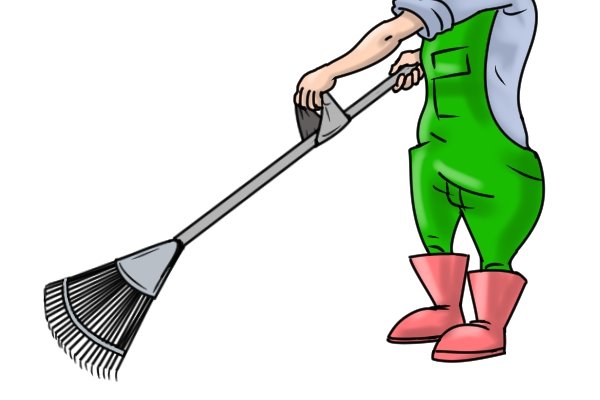 |
ComfortIf you find you get blisters or sore hands when using a rake try to find one with soft grips. People who suffer from back problems may benefit from choosing an ergonomically designed rake with an angled head or handle, or an extra grip handle. If you need to use a rake for a long time you will want to find one you find comfortable to hold. |
|||||||||||||||||||||||||||||||||||||||||||||||||||||
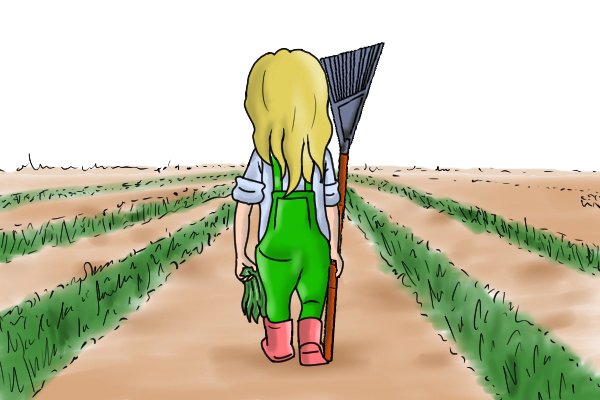 |
Size and landscape of gardenAn important thing to consider when choosing a rake is the area it will be used in. Small gardens, gardens with many shrubs, or gardens with lots of sharp corners or small gaps will require a rake with a fairly small head. Also, relatively short handles will be easier to control precisely. Narrow rakes should be able to reach into and around awkward spaces. |
|||||||||||||||||||||||||||||||||||||||||||||||||||||
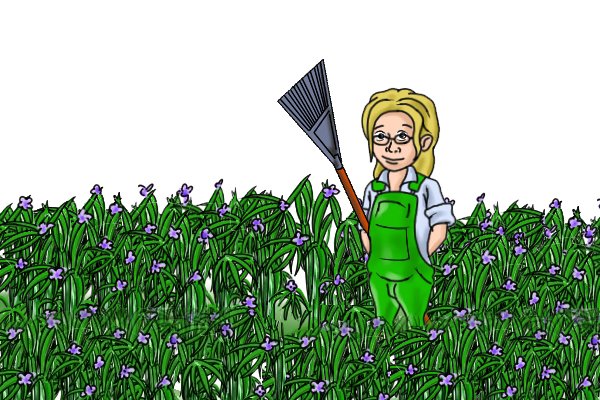 |
For large garden areas, especially open ones with limited corners and small spaces, rakes with larger heads can cover more ground quickly. However, they will be heavier to use and not as easy to move freely. Another feature of a garden to consider is the evenness of the ground. Rakes with flexible tines will be more forgiving of uneven ground, which could be damaged by rigid tines. | |||||||||||||||||||||||||||||||||||||||||||||||||||||
Which rakes can be used for which tasks? |
||||||||||||||||||||||||||||||||||||||||||||||||||||||
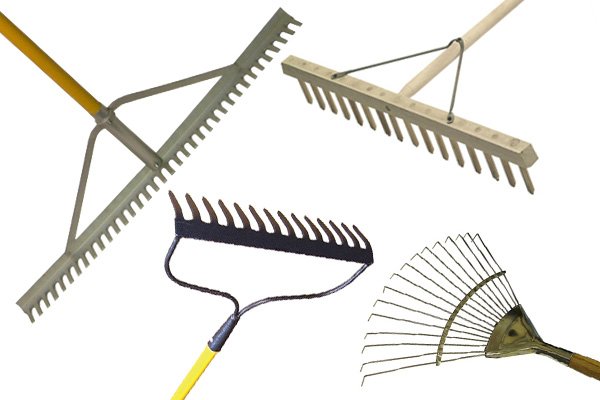 |
Most rakes can be used for various tasks, especially if they are high quality, but they can’t all be used for the same tasks. The table below gives you a quick guide to which rakes can be used for which jobs. | |||||||||||||||||||||||||||||||||||||||||||||||||||||
|
||||||||||||||||||||||||||||||||||||||||||||||||||||||
Which is the best type of rake for which task? |
||||||||||||||||||||||||||||||||||||||||||||||||||||||
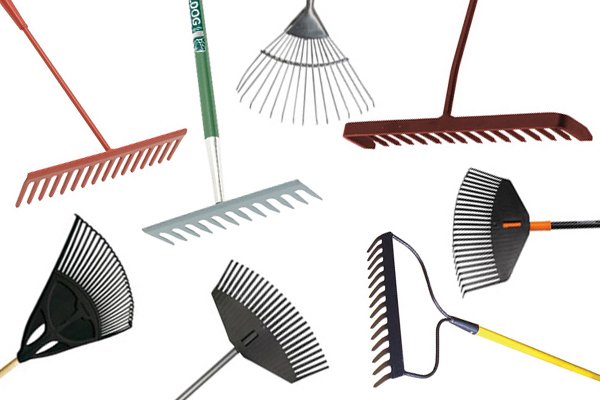  |
Some rakes will be more efficient than others for specific tasks, depending on the individual rake’s features. | |||||||||||||||||||||||||||||||||||||||||||||||||||||
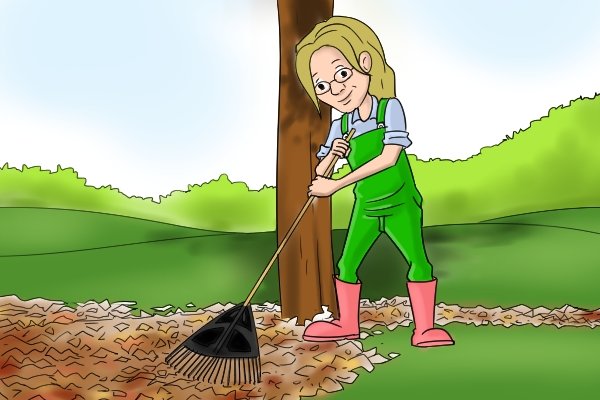  |
What is the best rake for gathering leaves?Leaf rakes get their name from the job they’re designed to do. Leaf rakes have flexible tines which fan out to a large span. This makes them perfect for gathering large amounts of leaves with each sweep, and also means they are gentle on ground surfaces. They should also be lightweight so they can be used for long periods at a time. |
|||||||||||||||||||||||||||||||||||||||||||||||||||||
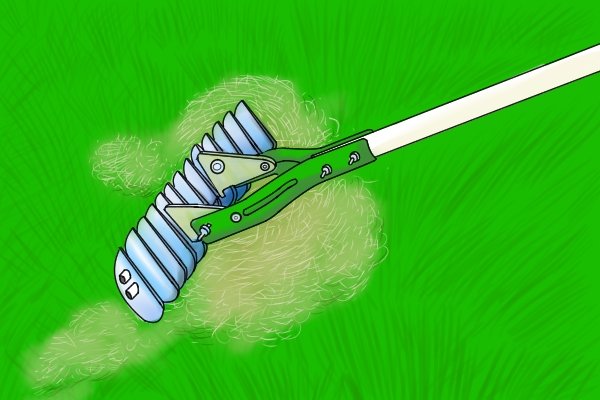  |
What is the best rake for scarifying lawns?Thatching rakes are specifically designed to scarify a lawn, by removing thatch and moss, and by scratching the soils surface layer. They have sharp tines which cut through tough roots and shoots, but can still pull up debris. Using a thatching rake to scarify should be less labour intensive than using other rakes for the task. |
|||||||||||||||||||||||||||||||||||||||||||||||||||||
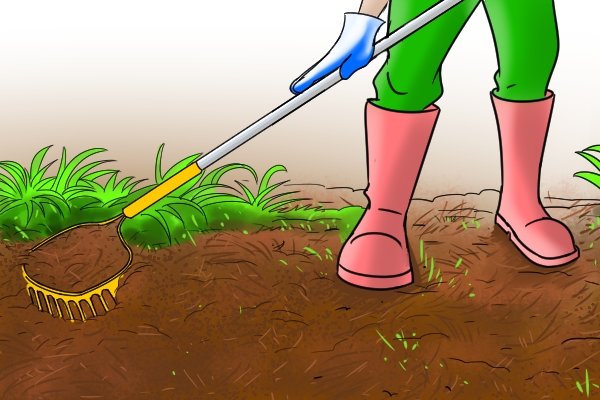  |
What is the best rake for turning soil?Garden rakes are sometimes called soil rakes because they are designed to be used for turning different types of soil, as well as other garden tasks. They are strong with widely spaced tines, so they can break up lumps and remove unwanted debris, like weeds and stones, from soil patches. |
|||||||||||||||||||||||||||||||||||||||||||||||||||||
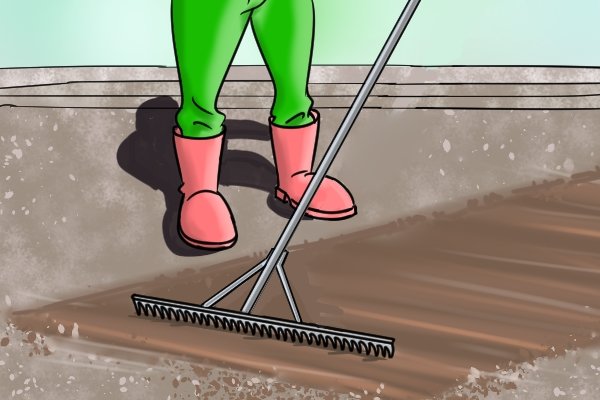  |
What is the best rake for levelling ground coverings?Landscape rakes are designed to level a variety of different ground covering materials, while still being relatively light to use. They are commonly used for covering fairly large areas, as they have extra wide heads. They have a flat edge on their heads, to smooth over a surface. |
|||||||||||||||||||||||||||||||||||||||||||||||||||||
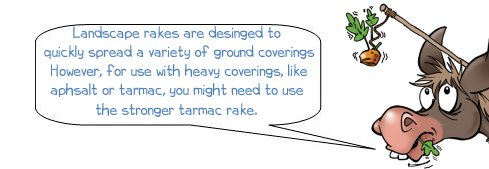  |
||||||||||||||||||||||||||||||||||||||||||||||||||||||







